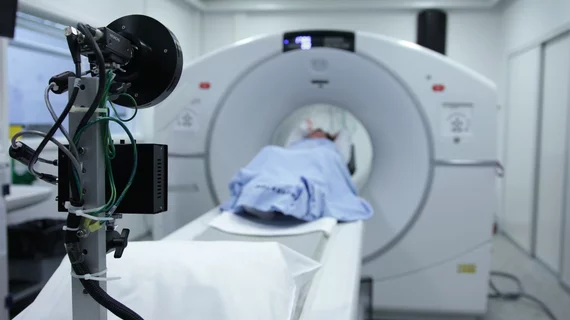CDC: How to safely image COVID inpatients
What personal protective equipment (PPE) should be worn when transporting a hospitalized patient with suspected or confirmed COVID-19 to radiology for imaging that cannot be performed in the patient room?
The CDC takes up the question in an updated FAQ page.
The answer, in so many words: For starters, inpatients with possible coronavirus really shouldn’t be moved from their room unless it’s for a “medically essential”—i.e., likely life-saving—intervention.
“If being transported outside of the room, such as to radiology, healthcare personnel in the receiving area should be notified in advance of transporting the patient,” CDC explains. “For transport, the patient should wear a facemask to contain secretions and be covered with a clean sheet.”
Once the patient arrives in the clinical area outside their inpatient room, “receiving personnel (e.g., in radiology) and the transporter (if assisting with transfer) should perform hand hygiene and wear all recommended PPE,” the agency advises. “If still wearing their original respirator or facemask, the transporter should take care to avoid self-contamination when donning the remainder of the recommended PPE.
“This cautious approach will be refined and updated,” CDC notes, “as more information becomes available and as response needs change in the United States.”
To read this response in its entirety, along with all others in the updated FAQ, click here.

